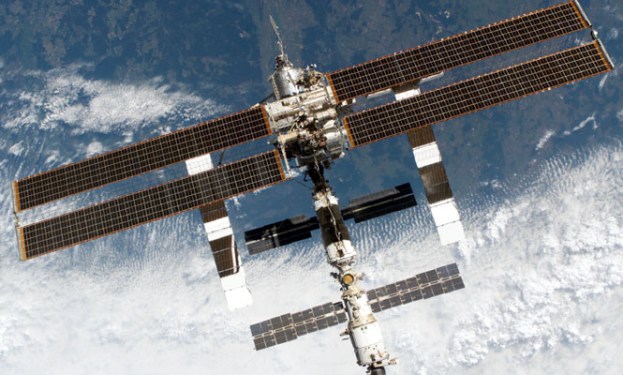 When an unmanned Russian rocket crashed en route to the International Space Station last month, the event prompted much discussion of the orbiting station and its six-man crew, who are currently reliant on the Russian space program for supplies and staffing changes. With the investigation of the crash still ongoing, it now looks like we have some answers regarding the near future for the ISS team.
When an unmanned Russian rocket crashed en route to the International Space Station last month, the event prompted much discussion of the orbiting station and its six-man crew, who are currently reliant on the Russian space program for supplies and staffing changes. With the investigation of the crash still ongoing, it now looks like we have some answers regarding the near future for the ISS team.
According to SpaceflightNow, three ISS crew members will have their stay aboard the station extended a week, and depart via one of the docked Soyuz “lifeboat” capsules. This will leave the station operating with half its crew until either the Russian investigation concludes and another rocket is launched, or the remaining crew members leave (via the final Soyuz capsule docked there).
The crew that will have their stay extended include station commander Andrey Borisenko, Russian cosmonaut Alexander Samokutyaev, and NASA flight engineer Ronald Garan, who were originally scheduled to depart September 8. The two Russian cosmonauts and one American astronaut will now leave September 15.
Once the trio leaves, the station will be staffed by astronaut Michael Fossum, Russian flight engineer Sergei Volkov, and Japanese crew member Satoshi Furukawa, who are scheduled to return to Earth in November.
While Russian engineers have discovered the source of the problem that caused the August 24 crash, officials’ investigation of the incident continues. The Russian space agency has indicated there will be no further launches until the investigation is concluded, and then a series of test flights and unmanned launches will precede any manned missions.
Editors' Recommendations
- NASA is operating its Mars Curiosity rover from workers’ home offices
- SpaceX Dragon spacecraft completes final mission ahead of crewed launch
- Watch the James Webb Space Telescope deploy its massive origami mirror
- Problem in parachute test forced SpaceX to drop its mock spacecraft
- All traditions are scrapped: Keeping coronavirus off the ISS




